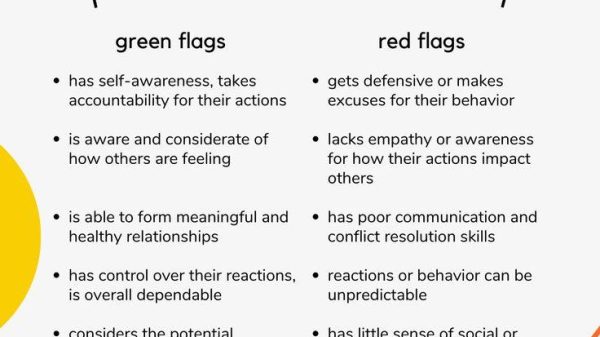In the intricate dance of human connection, where words often fall short and actions speak volumes, the concept of love languages emerges as a seemingly magical translator. Popularized by Gary Chapman in the mid-90s, love languages propose that understanding how we express and receive affection can unlock deeper emotional bonds. But as we navigate through the complexities of modern relationships, the question arises: do these love languages truly fortify the bridges between hearts, or are they merely a romantic notion dressed in pop psychology? This article delves into the origins, applications, and critiques of love languages, inviting readers to explore whether this framework is a key to enduring intimacy or simply another tool in the ever-expanding toolkit of relationship advice.
Exploring the Origins and Science Behind Love Languages
The concept of love languages was popularized by Dr. Gary Chapman in his 1992 book, “The Five Love Languages: How to Express Heartfelt Commitment to Your Mate.” The idea is grounded in the belief that individuals express and experience love in different ways, categorized into five primary languages: Words of Affirmation, Acts of Service, Receiving Gifts, Quality Time, and Physical Touch. By understanding and speaking your partner’s love language, it is believed that you can create a more fulfilling and harmonious relationship.
The science behind love languages touches on the psychology of interpersonal relationships. While empirical research specifically validating the effectiveness of love languages is limited, the theory resonates with broader psychological principles such as emotional intelligence and attachment styles. Key points include:
- Enhanced Communication: Recognizing and using a partner’s preferred love language can foster clearer and more meaningful exchanges.
- Emotional Connection: Tailoring affection in a way that aligns with a partner’s expectations can deepen emotional bonds.
- Personal Insight: Reflecting on one’s own love language can lead to greater self-awareness and personal growth.

Understanding the Role of Love Languages in Modern Relationships
In today’s intricate tapestry of relationships, the concept of love languages offers a nuanced lens through which partners can understand each other’s emotional needs. By identifying whether your partner resonates more with Words of Affirmation, Acts of Service, Receiving Gifts, Quality Time, or Physical Touch, you can tailor your expressions of love to better align with their preferences. This alignment is not about changing who you are but about enhancing the connection by speaking a language that resonates deeply with your partner’s emotional core.
Consider the subtle yet profound impact of acknowledging these love languages. For instance, a partner who thrives on Quality Time might feel more cherished through uninterrupted conversations or shared experiences, while someone who values Acts of Service may find profound connection in simple gestures like preparing a meal or taking care of errands. By tuning into these languages, couples can foster a more empathetic and supportive environment, potentially leading to stronger emotional bonds that are both resilient and fulfilling. Embracing this approach requires mindfulness and genuine effort but can transform the way love is expressed and received, creating a dynamic where both partners feel understood and valued.

Practical Tips for Applying Love Languages in Everyday Life
Integrating the concept of love languages into your daily interactions can transform relationships by fostering deeper emotional connections. Here are some practical ways to make love languages a part of your everyday life:
- Words of Affirmation: Start your day by sending a thoughtful text or leaving a sweet note for your partner. These small gestures can uplift their mood and strengthen your bond.
- Acts of Service: Consider performing a chore that your partner usually handles, like cooking dinner or walking the dog. This act shows appreciation and support without needing words.
- Receiving Gifts: Surprise your loved one with a small, meaningful gift that reflects their interests or a shared memory. It doesn’t have to be extravagant; even a favorite snack can speak volumes.
- Quality Time: Dedicate at least 30 minutes of undistracted time to engage in an activity you both enjoy. Whether it’s a walk in the park or a cozy movie night, being present is key.
- Physical Touch: Simple gestures like holding hands, a gentle hug, or a reassuring pat on the back can convey love and reassurance, reinforcing your emotional connection.
By consistently applying these practices, you not only speak your partner’s love language but also invite a mutual exchange of affection and understanding. This approach nurtures an environment where emotional bonds can thrive and flourish.

Evaluating the Effectiveness of Love Languages in Emotional Connection
In the realm of relationships, the concept of love languages, introduced by Gary Chapman, suggests that understanding and speaking your partner’s love language can foster deeper emotional connections. But how effective are these languages in building stronger bonds? The idea revolves around the notion that everyone has a preferred way of giving and receiving love, categorized into five primary languages: words of affirmation, acts of service, receiving gifts, quality time, and physical touch. By identifying and nurturing these preferences, couples can potentially enhance their emotional intimacy.
- Words of Affirmation: Compliments and verbal encouragement can strengthen a partner’s self-esteem and sense of being valued.
- Acts of Service: Simple acts, like preparing a meal or helping with chores, can express love through thoughtful gestures.
- Receiving Gifts: Tangible symbols of love, no matter how small, can hold significant sentimental value.
- Quality Time: Focused, undistracted time together can deepen understanding and connection.
- Physical Touch: Hugs, kisses, and cuddles can foster a sense of closeness and reassurance.
While some argue that love languages are overly simplistic, they offer a framework for recognizing and appreciating diverse expressions of affection. By intentionally tuning into a partner’s preferred language, individuals may cultivate a more empathetic and responsive relationship dynamic. However, it’s essential to remember that these languages are tools, not solutions, and should be used as part of a broader effort to communicate and understand each other.








